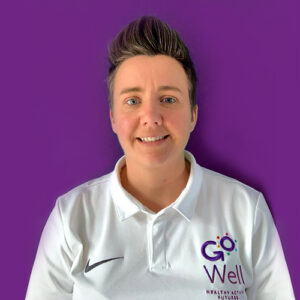Coinciding with winter, the recent lockdown is likely to have had a significant impact on your pupils’ activity and fitness levels. Children have missed out on school PE lessons, after-school activities, active travel, organised sport and outdoor play. On-line lessons have also increased screen use and sedentary behaviour.
Young people should undertake 60 minutes of moderate intensity activity over the course of a day. In this blog we explore how you can support your class as they return to school and help them to develop an active and healthy lifestyle.
- Start where children are now, not where they were. Be compassionate and build things up steadily. Many of your pupils may not be able to do some activities or movements which they found easy before Christmas. Introducing a programme of daily activities will help to increase stamina, flexibility and strength gradually. Regular routines also have a positive impact on a child’s social and emotional development, which is particularly important at this time.
- Build your pupils’ confidence and competence to move. Focus on good technique and differentiate to easier movements if required. To help children get moving again, activities need to be easy to understand and fun – keep things simple. Think about how you can extend an activity or movement to help those who are ready for development whilst enabling everyone in the class to feel a sense of achievement.
- Focus on effort and reaching moderate to vigorous intensity levels – the number of individual movements completed is irrelevant. Aim for a moderate level of activity initially and build to vigorous over time. Use the Rate of Perceived exertion chart to see where children are now and aim to get them to work at a higher intensity each week.
- Let them choose. With lockdown restrictions, many children feel a sense of powerlessness. Letting your class choose which activity or game to use is a great way for them to feel involved and listened to and in turn, this will help to build up their confidence. You can encourage the class to choose an activity that everyone takes part in, or pair pupils up and ask each pair to choose which activity they are going to do. Giving students a voice will also develop ownership of the activity and lead to greater participation and commitment.
- Avoid comparison with others, especially in the early days. Individual workouts can be a great way to start your physical activity programme and ensure it is a personal challenge. When working together, think about grouping pupils by ability or fitness levels to avoid children feeling self-conscious. Create a culture where everyone’s achievements are celebrated by focusing on progress made. This will help bring your class closer together and develop respect for each other.
- The best approach to encouraging children to be more active is little and often. Increasing the amount of time spent being physically active across all subjects will help to increase how often children are active during the day, it will also improve educational outcomes and emotional development.

Our Fit for Life programme can help you achieve all this, and more. Fit for Life has been specially designed to help you deliver high quality fitness workouts for your pupils. The 10-minute blast sessions use high intensity activities to support muscle and bone strengthening and can be done anytime, anywhere.



